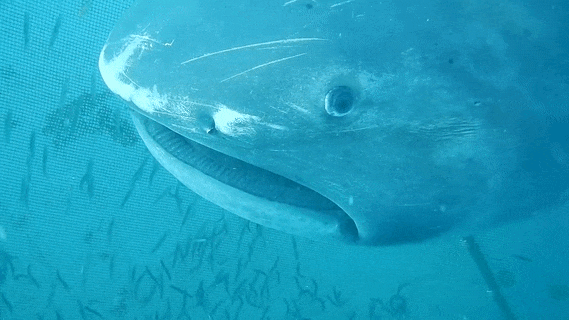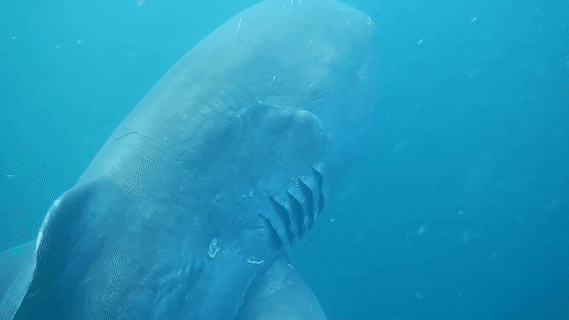Logics-posts - Jude

More Posts from Logics-posts and Others

kuguri sashi tutorial by guccciclone on instagram
sashiko is such an interesting japanese technique for mending clothes! I still have yet to try it yet I want to one day!

There are four types of fish scales!
Cycloid scales are thin, overlap, and flexible. They're found on primitive teleosts (like minnows and carp).
Ctenoid scales have small, backwards pointed scales (known as cterns) make the fish more hydrodynamic and faster. They're found on Advanced Ctenoids (like perch and sunfish).
Ganoid scales are thick, diamond-shaped, and mostly non-overlapping. They're found on Chondrostei (like sturgeons and paddlefish).
Placoid scales are spikey and tooth-like with nerves. These are found on Chondrichthyes (like sharks and rays).
Ichthyology Notes 3/?
STOP SCROLLING

Your life ends in the wasteland.

Castle seen from forest by Mark Ferrari.


Hwiccewyrm trispiculum lived during the late Triassic, around 208-202 million years ago, in what is now England. It was one of the last known members of the procolophonid family, a lineage of small stocky lizard-like animals that had been widespread and abundant earlier in the Triassic.
(Traditionally procolophonids are classified as parareptiles, but some recent studies suggest this group is paraphyletic or polyphyletic, with some "parareptiles" potentially nesting within the diapsids instead.)
Measuring around 30cm long (~1'), Hwiccewyrm had wide flaring cheek bones ornamented with large spines, and like some other procolophonids it may also have had bony scute armor on its body. Its large blunt teeth suggest it was feeding on particularly tough foods such as fibrous vegetation or hard-shelled invertebrates.
———
NixIllustration.com | Tumblr | Patreon
References:
Butler, Richard J., et al. "Hwiccewyrm trispiculum gen. et sp. nov., a new leptopleuronine procolophonid from the Late Triassic of southwest England." The Anatomical Record 307.4 (2024): 1390-1420. https://doi.org/10.1002/ar.25316
Meade, Luke E., et al. "A new procolophonid with complex dentition from the Late Triassic of southwest England." Papers in Palaeontology 10.6 (2024): e1605. https://doi.org/10.1002/spp2.1605
Merck, John. "The Reptilian Stem - A Work in Progress" University of Maryland GEOL 431 Vertebrate Paleobiology, 2025, https://www.geol.umd.edu/~jmerck/geol431/lectures/17sauropsida.html
Wikipedia contributors. “Hwiccewyrm” Wikipedia, 20 Mar. 2025, https://en.wikipedia.org/wiki/Hwiccewyrm
Wikipedia contributors. “Parareptilia” Wikipedia, 04 Apr. 2025, https://en.wikipedia.org/wiki/Parareptilia
W̶̡̡̨̨͇̬̭͎̖̠̩̲̹͙̋̍͆̍͛̉̍͐̉͗̈̚͜e̵̛̳͎̣̬̽̌̈̑͌̏̍̌͑͑́͝l̶̨̼̹͊̅̅͆̈̅̇͘c̴̨̥̫̏͘ǫ̷̜̺̮̻͉̗͖͙̞̜͖͍̱͊͋ṁ̸͚̞͙̘̯̗̠̅͛̐́̔̚è̴̥̈́̋ ̴̰̤͖̻͗̈́͜Ḩ̷͚̭̳̞͎́̄̒̓ô̸̢̼̺͓͕̺̆̀̈́̇̎̚m̵̖̦͇̬̭̒͊́́͋̑̋̋̈́̌̚͝͝͝ę̴̰̩̰̣̩̘̜̠͔̤̯̼̉̂͒̕ͅ


Divers free a Megamouth shark from a fishing net in Tateyama Bay.
The Megamouth is a large deep-sea shark, rarely seen by people. Despite reaching a considerable adult size of 4m-5.2m, they are the smallest of the filter-feeding sharks, which includes the Basking Shark and the Whale Shark.. Their large mouths are lined with bioluminescent photophores, which are thought to attract plankton and fish to the slow-moving shark.
(source)

Due to a growing demand for sustainable travel, the Orient Express is coming back in Europe for the first time since 1977.
-
 marcillemon liked this · 3 weeks ago
marcillemon liked this · 3 weeks ago -
 bean-of-cheese liked this · 3 weeks ago
bean-of-cheese liked this · 3 weeks ago -
 lycantrin liked this · 4 weeks ago
lycantrin liked this · 4 weeks ago -
 ricky-mortis-reblogs reblogged this · 4 weeks ago
ricky-mortis-reblogs reblogged this · 4 weeks ago -
 ricky-mortis liked this · 4 weeks ago
ricky-mortis liked this · 4 weeks ago -
 liminalspaceintercom liked this · 4 weeks ago
liminalspaceintercom liked this · 4 weeks ago -
 4leaf liked this · 4 weeks ago
4leaf liked this · 4 weeks ago -
 meelonsquid reblogged this · 4 weeks ago
meelonsquid reblogged this · 4 weeks ago -
 meelonsquid liked this · 4 weeks ago
meelonsquid liked this · 4 weeks ago -
 undercoverbrellla reblogged this · 4 weeks ago
undercoverbrellla reblogged this · 4 weeks ago -
 alwaysmoretapes liked this · 4 weeks ago
alwaysmoretapes liked this · 4 weeks ago -
 alwaysmoretapes reblogged this · 4 weeks ago
alwaysmoretapes reblogged this · 4 weeks ago -
 undercoverbrellla reblogged this · 4 weeks ago
undercoverbrellla reblogged this · 4 weeks ago -
 aatpg liked this · 4 weeks ago
aatpg liked this · 4 weeks ago -
 ailes-corner liked this · 1 month ago
ailes-corner liked this · 1 month ago -
 bi-streetcat reblogged this · 1 month ago
bi-streetcat reblogged this · 1 month ago -
 bi-streetcat liked this · 1 month ago
bi-streetcat liked this · 1 month ago -
 short-pan-tired reblogged this · 1 month ago
short-pan-tired reblogged this · 1 month ago -
 ibsrabbit reblogged this · 1 month ago
ibsrabbit reblogged this · 1 month ago -
 randomotaku-418 liked this · 1 month ago
randomotaku-418 liked this · 1 month ago -
 doyoupraisethewalls liked this · 1 month ago
doyoupraisethewalls liked this · 1 month ago -
 derelicts liked this · 2 months ago
derelicts liked this · 2 months ago -
 sweet-mephistopheles reblogged this · 2 months ago
sweet-mephistopheles reblogged this · 2 months ago -
 yenoodlethings reblogged this · 2 months ago
yenoodlethings reblogged this · 2 months ago -
 wildernestt liked this · 3 months ago
wildernestt liked this · 3 months ago -
 morenyankomusumereblogs reblogged this · 3 months ago
morenyankomusumereblogs reblogged this · 3 months ago -
 lancemcool reblogged this · 4 months ago
lancemcool reblogged this · 4 months ago -
 kosyrev liked this · 4 months ago
kosyrev liked this · 4 months ago -
 potatoobsessed999 liked this · 5 months ago
potatoobsessed999 liked this · 5 months ago -
 wunderpug reblogged this · 5 months ago
wunderpug reblogged this · 5 months ago -
 littledemon55 liked this · 5 months ago
littledemon55 liked this · 5 months ago -
 artemiseternal liked this · 5 months ago
artemiseternal liked this · 5 months ago -
 existentialcrisisetcetera reblogged this · 5 months ago
existentialcrisisetcetera reblogged this · 5 months ago -
 groovinomicon liked this · 5 months ago
groovinomicon liked this · 5 months ago -
 it-is-i-zim reblogged this · 5 months ago
it-is-i-zim reblogged this · 5 months ago -
 fartteam2 liked this · 5 months ago
fartteam2 liked this · 5 months ago -
 kasarasun liked this · 5 months ago
kasarasun liked this · 5 months ago -
 sunderlights reblogged this · 5 months ago
sunderlights reblogged this · 5 months ago -
 varsbaby liked this · 5 months ago
varsbaby liked this · 5 months ago -
 ilaughtatmyself reblogged this · 5 months ago
ilaughtatmyself reblogged this · 5 months ago -
 meklarianb reblogged this · 5 months ago
meklarianb reblogged this · 5 months ago -
 a-peculiar-potoo reblogged this · 5 months ago
a-peculiar-potoo reblogged this · 5 months ago -
 a-peculiar-potoo liked this · 5 months ago
a-peculiar-potoo liked this · 5 months ago -
 foggystarfishmaker liked this · 5 months ago
foggystarfishmaker liked this · 5 months ago -
 rubitheracoon reblogged this · 6 months ago
rubitheracoon reblogged this · 6 months ago -
 rubitheracoon liked this · 6 months ago
rubitheracoon liked this · 6 months ago -
 annaqa2pe liked this · 6 months ago
annaqa2pe liked this · 6 months ago -
 shrimppuku reblogged this · 6 months ago
shrimppuku reblogged this · 6 months ago -
 shrimppuku liked this · 6 months ago
shrimppuku liked this · 6 months ago
